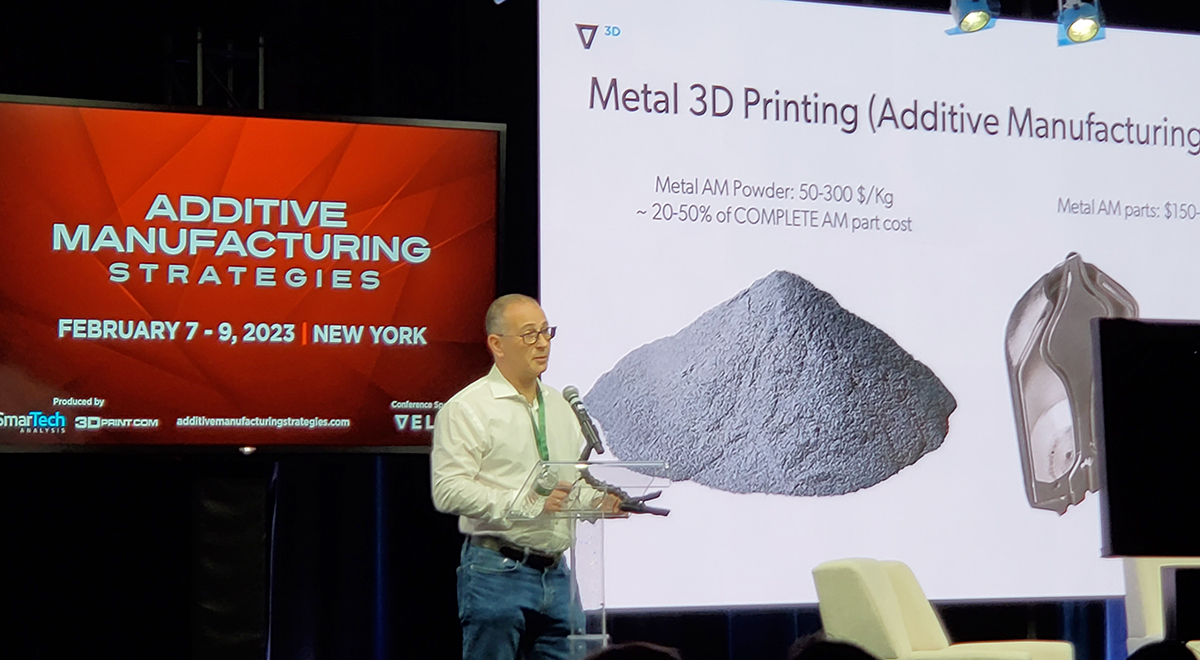In its first earnings report since CEO Benny Buller stepped down, Velo3D (NYSE: VLD) disclosed a downturn in its financial performance, as revenue for 2023 declined and net losses intensified compared to 2022. Despite these challenges, Velo3D is leaning on its strategic realignment to stay ahead of the curve, leading to decreased operating expenses, increased bookings, and a bigger customer base, particularly in the defense sector.
For the fourth quarter of 2023, Velo3D reported revenues of $2 million, a decrease due to lower system shipments and the transition period of its strategic realignment. The company’s profit margin was very low, a negative 1,857% for the quarter, mainly due to fewer system sales and adjustments in inventory value. The net loss for the quarter was $58.2 million, sharply up from the $22.6 million net loss in 2022, affected by one-off financial charges.
Operating expenses dropped to $24.5 million in the last quarter, down from $26.7 million, indicating effective cost-reduction efforts. Also, the company successfully implemented sales initiatives to stimulate booking growth, which resulted in over $15 million in new orders since mid-December 2023. Despite this, Velo3D anticipates gradual financial improvements in 2024.
In 2023, Velo3D made $77.6 million in total sales, a slight decrease from $80.8 million in 2022. However, the company lost $135 million during the year, a big change from its $10 million profit in 2022.
During an earnings call with investors, CEO Brad Kreger stated that Velo3D’s fourth-quarter results were very disappointing. He explained that 2023 was a year of big changes, focusing initially on rapid growth. This strategy led to problems in the second half of the year, including issues with new products and unhappy customers. The company’s efforts to expand its market presence didn’t work out well, affecting sales and bookings.
Responding to these challenges, Velo3D started to realign its strategies last quarter, aiming to cut costs, improve sales, and ensure customer satisfaction. Kreger mentioned that despite the difficulties, the company is making progress and beginning to see the positive effects of these changes. He believes these efforts will lead to steady profits by the end of 2024.
“2023 was a transformational year for the company. Our focus on a hyper-growth business strategy at the beginning of the year significantly impacted second-half performance as multiple new product introductions and rapid expansion of our install base led to material increases in field system issues and customer concerns,” said Kreger. “Similarly, as we expanded beyond our early adopters of the technology to broader markets, we found our sales methodologies did not translate effectively, leading to poor opportunity qualification. These issues directly affected our bookings rate as evidenced by our very disappointing fourth-quarter results.”
During the call, Kreger also informed investors that he would not discuss the strategic review process. Velo3D undertakes this process to evaluate various options and strategies to improve stockholder value. It potentially involves discussions with multiple parties and can lead to shifts in the company’s direction, partnerships, or structure.
Despite these challenges, Kreger also noted a rebound in sales bookings, driven by changes in market strategy and a focus on customer success. He pointed out that Velo3D had cost reductions of over 15% in the fourth quarter and anticipated further expense decreases. In addition, improvements in manufacturing efficiency and customer service were also indicated as positive outcomes of the company’s strategic shift. Moving on, he pointed to a growing backlog of orders, especially in areas like space, defense, and aerospace, as signs of Velo3D’s recovery and potential for upcoming success, where it has added new customers like NASA, Avio, Kratos Defense, Bechtel, and Ohio Ordnance.
Ending the quarter with $31 million in cash and investments, the company saw a 35% improvement in cash flow compared to the previous year, which was in line with its expectations. Velo3D looks forward to gradual improvements in revenue, profit margins, and operating costs in 2024, aiming for a cash flow break-even in the second half of the year. Management forecasts revenue between $80 million and $95 million for 2024, with gross margins improving to between 20% and 30% by the fourth quarter.
The impact of Velo3D’s financial results was reflected in its stock performance. The company’s stock closed at 58 cents on March 26, sharply declining during after-market trading following the release of the earnings report. The morning after, the stock opened at 39 cents, continuing its trend of trading below the $1 mark since December 1, 2023, a substantial drop from its IPO price of almost $10. In early January, Velo3D received a notice from the New York Stock Exchange (NYSE) indicating that its stock prices had fallen below the exchange’s minimum requirements. While Velo3D is not alone, as other players in the 3D printing industry have received similar notifications, it has to regain compliance by ensuring that its common stock not only closes at or above $1 on the last trading day of any calendar month during the six-month cure period – a window to fix the problem with its stock price – but also that the stock’s average closing price is at least $1 throughout the 30 days leading up to that final day.
Overall, Velo3D’s first earnings report after Buller’s departure revealed a challenging period marked by declining revenue, intensified net losses, and a low profit margin. However, the company is actively implementing strategic realignment initiatives to reduce expenses, improve sales, and enhance customer satisfaction. The company is making efforts to rebound its sales bookings and reduce costs. The question is, will this be enough to trace a path towards a financial recovery in 2024? It won’t be long until the first results of the year are reported; perhaps we will have a clearer picture of the company’s future trajectory then.
Subscribe to Our Email Newsletter
Stay up-to-date on all the latest news from the 3D printing industry and receive information and offers from third party vendors.
Print Services
Upload your 3D Models and get them printed quickly and efficiently.
You May Also Like
Reinventing Reindustrialization: Why NAVWAR Project Manager Spencer Koroly Invented a Made-in-America 3D Printer
It has become virtually impossible to regularly follow additive manufacturing (AM) industry news and not stumble across the term “defense industrial base” (DIB), a concept encompassing all the many diverse...
Inside The Barnes Global Advisors’ Vision for a Stronger AM Ecosystem
As additive manufacturing (AM) continues to revolutionize the industrial landscape, Pittsburgh-based consultancy The Barnes Global Advisors (TBGA) is helping shape what that future looks like. As the largest independent AM...
Ruggedized: How USMC Innovation Officer Matt Pine Navigates 3D Printing in the Military
Disclaimer: Matt Pine’s views are not the views of the Department of Defense nor the U.S. Marine Corps Throughout this decade thus far, the military’s adoption of additive manufacturing (AM)...
U.S. Congress Calls Out 3D Printing in Proposal for Commercial Reserve Manufacturing Network
Last week, the U.S. House of Representatives’ Appropriations Committee moved the FY 2026 defense bill forward to the House floor. Included in the legislation is a $131 million proposal for...




































